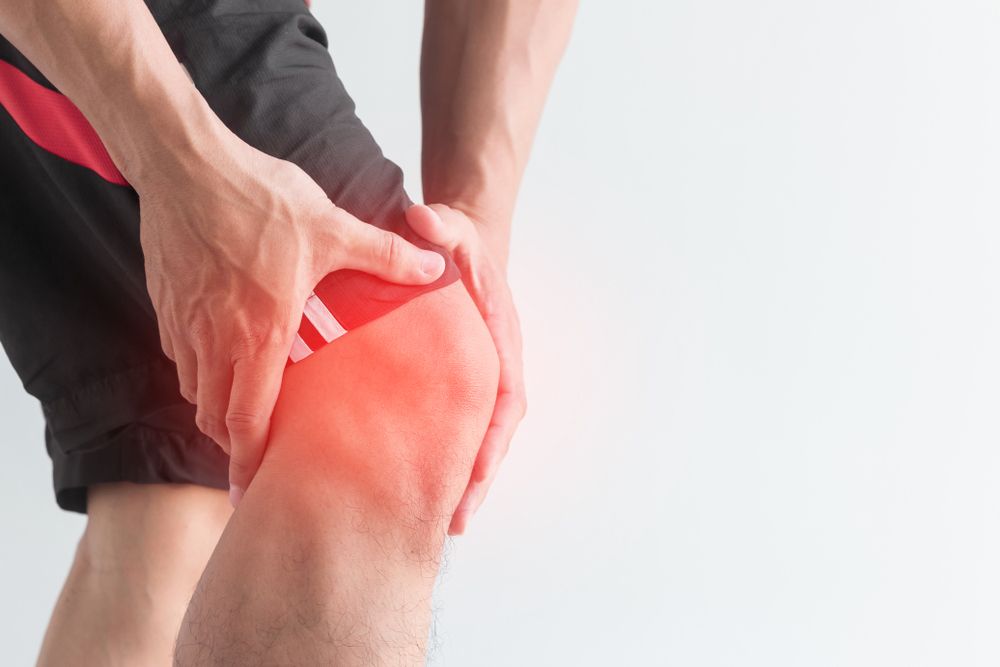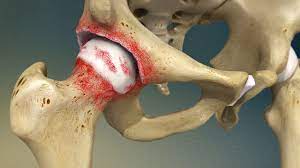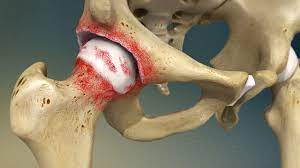Knee, Osteoarthritis, Pathogenesis, Prevalence, Arthritis, Joint pains, Degenerative joint disease, DJD, Arthritis pain relief, Remedies for arthritis, Arthritis in hands, Arthritis symptoms, Arthritis home remedies.
Root Cause of Disease
Osteoarthritis is one type of Knee Pain. Osteoarthritis of the knee happens when the cartilage in your knee joint breaks down, enabling the bones to rub together. The friction makes your knees hurt, become stiff and sometimes swell. While osteoarthritis in the knee can’t be cured, there are many treatments to slow its progress and ease your symptoms.
Sometimes called degenerative arthritis, osteoarthritis is the most common type of arthritis. It’s a wear-and-tear condition that occurs when the cartilage in your knee deteriorates with use and age.
Symptoms
Pain is the most common symptom of osteoarthritis in the knee. Your knee might hurt when you move it, or even when you are just sitting still. Other symptoms are:
- Your knee feels stiff, particularly when you first get up or when you’ve been sitting for a long time
- Your knee looks swollen or feels puffy
- You hear a cracking or grinding noise when you move your knee
- Your knee feels wobbly, as if it could buckle or “give out”
- Your knee might lock up, or feel as if it is stuck
Causes
- Osteoarthritis of the knee happens when your knee joint cartilage wears out or is damaged
- Articular cartilage is tough, rubbery tissue on the ends of your bones that lets you bend and move. Meniscal cartilage absorbs shock from pressure on your knee
- Your cartilage is like your car’s shock absorber, protecting your car from bumps and jolts
- Drive on lots of rough roads, your shocks wear out fast. Drive on easy streets, your shocks last longer. You can wear out or damage your knee joint cartilage
- You’re overweight. If your body mass index (BMI) is 30 or more, you’re seven times more likely to develop osteoarthritis in your knee than someone with a lower BMI
- You injure your knee or have an old knee injury
- You frequently put stress on your knee at your job or playing sports
- You inherited a tendency to develop osteoarthritis of the knee
- You have crooked bones or joints, such as having knocked knees
There are two main types of osteoarthritis:
- Primary: Most common, generalized, primarily affects the fingers, thumbs, spine, hips, knees, and the great (big) toes
- Secondary: Occurs with a pre-existing joint abnormality, including injury or trauma, such as repetitive or sports-related; inflammatory arthritis, such as rheumatoid, psoriatic, or gout; infectious arthritis; genetic joint disorders, such as Ehlers-Danlos (also known as hypermobility or “double-jointed; congenital joint disorders; or metabolic joint disorders
Osteoarthritis has often been referred to as a wear and tear disease. But besides the breakdown of cartilage, osteoarthritis affects the entire joint. It causes changes in the bone and deterioration of the connective tissues that hold the joint together and attach muscle to bone. It also causes inflammation of the joint lining.
Home Remedies to treat Osteoarthritis
Remedy – 1: Turmeric
Materials: Turmeric

Add a pinch of turmeric and a teaspoon of honey in a glass of lukewarm water and drink this solution on a regular basis for a week. Turmeric contains anti-inflammatory and antioxidant properties, which makes it an excellent remedy for treating joint pains.
Product Link: Turmeric
Remedy – 2: Ginger
Materials: Ginger

Ginger is biologically called Zingiber Officinale. These can be easily included in your diet and go a long way in curbing knee pain
Product Link: Ginger
Remedy – 3: Garlic
Materials: Garlic

The medical name for garlic is allium sativum. Five to six cloves eaten everyday has proved to reduce knee pains.
Product Link: Garlic
Remedy -4: Hot and cold compress
When it comes to pain, hot and cold compresses may be very beneficial. They don’t cause the long-term side effects that medications might. Hot compresses are helpful for joint stiffness, and cold compresses are best for joint pain. Compresses can reduce muscle pain or spasms surrounding a joint. Making a compress can be as simple as using a warm or cold towel.

Materials:
- Ice (or frozen vegetables)
- Washcloth
- Water
- Plastic bag
- Towel
Procedure:
- Place ice cubes in a plastic bag. You can also use a towel to make a cold compress if you don’t have ice
- Dampen a towel with cold water and place it in a sealable plastic bag.
- Put the bag in the freezer for 15 minutes
- Run a washcloth under cold water and then wrap it around the plastic bag of ice. You can also dip the washcloth into an ice bath if you don’t think it’s too cold against your skin.
- Place the homemade compress on your skin for up to 20 minutes.
- Dry the area with a towel after you’re done. You can also dab the skin as you hold the ice pack on yourself. The ice may start melting pretty quickly.
Remedy -5: Epsom salt bath
Materials: Epsom salt bath

Epsom salt baths can provide all-over relief, especially for joint pain. The magnesium in Epsom salt may help with inflammation and pain. A 2017 review showed that soaking in an Epsom salt bath for a prolonged time may increase your magnesium levels.
Procedure:
- 300 grams (1.5 cups) of Epsom salt to 1 gallon of water
- 1 cup of Epsom salt to 1 gallon of water
- 2 cups of Epsom salt added to your bathtub of water
Soak for at least 15 minutes. If you’re soaking in an Epsom salt bath for aches and pains, make sure not to use water that’s too hot. This might worsen instead of reducing swelling.
Other Remedies
Herbal Remedies
Herbal remedies are increasing in popularity for conditions like osteoarthritis. Some people believe they may be safer since they have fewer side effects compared with traditional medications.
Talk with your doctor about the following natural remedies. “Natural” herbal supplements can carry side effects and interact with medications you might take. Always be sure to buy supplements from a reputable source.
Green tea
Green tea contains polyphenols. Its compounds may help lower inflammation and the need for medications. The use of green tea in treating knee osteoarthritis showed that the tea can help with joint function. Due to the risk of liver problems and side effects from concentrated amounts, it’s best to drink green tea in moderation.
Sign up for Tai Chi
Tai Chi has been studied for its all-body, slow-motion movements that promote joint health. It’s a great low-impact exercise for all ages. Sign up for a Tai Chi class to see the benefits, which include pain relief, joint health, muscular strength, balance and flexibility.
Relax with essential oils
Essential oils are another great route for all-natural pain relief. Essential oils including lavender, peppermint, eucalyptus and frankincense have been studied for their anti-inflammatory properties. Try inhaling one for 40 minutes during your daily commute, or add a few drops to your next hot bath. Essential oils, such as rue oils, will relax your muscles and make your pain go away.
Follow an anti-inflammatory diet
Your diet has a big impact on your pain. It’s a good idea to follow an anti-inflammatory diet. This means lots of fresh fruits, vegetables, fish, whole grains and olive oil. You should also try to avoid processed foods, which contain unhealthy compounds like MSG. Some of the best anti-inflammatory foods include leafy greens, cold-water fish, avocados and beans. Overall, you should try to get lots of omega-3, fiber.
Get massage therapy
Finally, if you’re suffering from joint pain, you may consider trying massage therapy. A professional massage therapist can relax your muscles, promote healing and release tension, all while restoring position. You’ll feel great and your muscles will be ready to better support your joints.
Turmeric
Curcumin is the active compound in turmeric. It’s part of the ginger family but may help osteoarthritis in different ways. Curcumin may be able to slow disease progression and provide pain relief. If you want to try turmeric as a natural treatment, take 500 milligrams of curcumin twice daily.
Home remedies aren’t meant to completely replace medical treatments, but they may be able to help you manage osteoarthritis pain with fewer side effects.
Preventions
While you can’t always prevent osteoarthritis of the knee, there are steps you can take to reduce the risk you’ll develop it:
- Maintain a healthy weight
- Get plenty of rest
- If you jog or run, do so on grass or soft surfaces
- Vary your fitness routine with low-impact exercises such as swimming or cycling
- Add light strength training to your fitness routine




